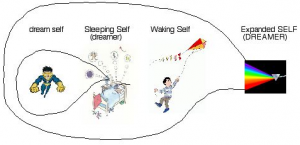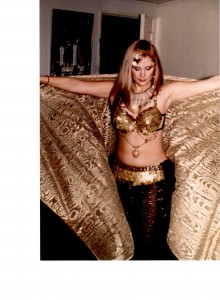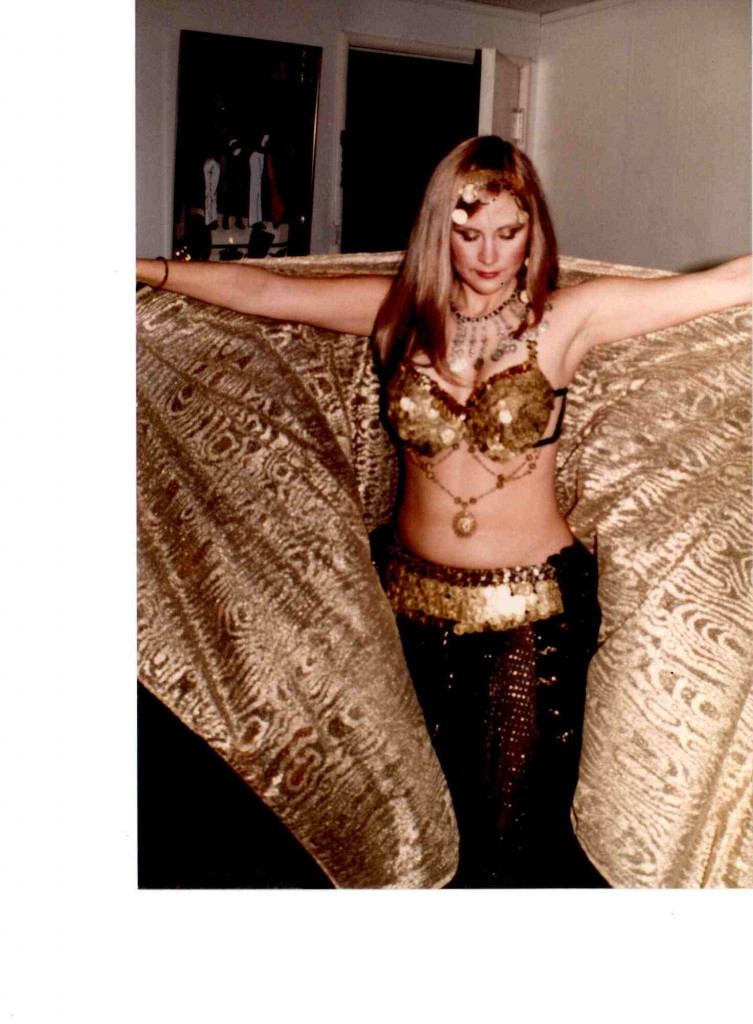From Lucid Dreaming to Lucid Living
 From Lucid Dreaming to Lucid Living
From Lucid Dreaming to Lucid Living Workshop at the International Association for the Study of Dreams (IASD) PsiberDreaming Conference September, 2003.
This paper explores the use of lucid dreaming techniques and implications in our waking life. Lucid dreaming simply means being “aware that we dream while we dream.” Appendix 1 includes an expanded definition of lucid dreaming. As in sleeping lucid dreams, we can learn to awaken in our lives, to live with less fear, to experience the joy of success, and to feel a sense of oneness with everyone and everything in our waking life.
I have been a lucid dreamer continuously since childhood. In my first lucid dream at age seven, I faced up to a scary witch during a recurring nightmare (see Reference 12.) Since then, I remember about half a dozen dreams per night, and I usually become lucid, to various degrees, several times a week. Numerous books, magazines, conferences, and TV specials have featured my work, originally with Dr. Stephen LaBerge at Stanford University (see References 1 – 26.) I have led lucid dreaming/lucid living workshops and groups for years. (see my web site: www.durso.org )
DREAM SELF and PHYSICAL SELF
When discussing a non-lucid dream while awake, I refer to my dream self as “me” or “I,” (as in: “I was flying”) and I refer to my physical self (or part of my physical self’s “mind”) as the one who creates the dream, whom I call the dreamer. By definition then, I can not call my dream self the dreamer, although I recognize that some people do. Note, that I do not feel my physical self’s brain contains my physical self’s mind. I also assume that a “mind” is not physical. In a lucid dream, although I also refer to my dream self as “I”, I can sense my connection to the dreamer, and I feel like a “larger, expanded self.” Sometimes I even feel connected to what I’ll later describe as the “Dreamer of life.”
Who do you feel creates your dreams?
How would you define the “dreamer?”
Although I usually say that my dream exists in my physical self’s mind, it usually feels as though my dream and my physical self exist in separate dimensions, and when I “wake up”, I change dimensions (or perspectives.) Most importantly, when I become lucid, I feel that my thoughts definitely do not come from my dream self’s mind or brain, but from my physical self’s mind. For example, my dream self will often have a different life, history, motivations, and goals than my physical self.
So, to summarize, in a lucid dream I usually experience myself in a 3-dimensional, vivid world that I believe my physical self’s mind has created. Therefore, I feel safe because I feel I exist in my physical self’s mind and not in physical reality (where my physical body resides). Because I see the dream as being created by my physical self’s mind, I also know that anything I (the dreamer) can imagine can happen. By believing that everyone and everything around me in the dream, including my dream self and other dream characters, exists in my physical self’s mind, I experience everyone as “one”, or “made of the same substance” and all “parts of a whole.”
What assumptions do you make when you become lucid in sleeping dreams?
In a lucid dream, I feel free to do whatever I please, have fun, experiment, solve problems, accomplish goals, and go wherever my imagination takes me, taking care to balance spontaneity and control. I have learned that sometimes it is better to surrender to the dream and other times it helps to take control, change things, or carry out goals.
LUCID LIVING
When I view my waking life as a dream, a dream in which I know I am dreaming (to various degrees, of course), I call this lucid living. Waking life may feel ‘real’ and unlike a ‘dream,’ merely because I lack lucidity, just as non-lucid dreams can feel like physical reality, until I become lucid. I try to view life as an “actual dream” and not to merely use lucid living as a therapy or philosophy. The assumptions that come from viewing life as a dream can be very powerful and can expand what we feel is possible in life.
If I look at waking life as a dream, then I can also use lucid dreaming techniques, that I learned from my sleeping dream experiences, to more easily become lucid in my waking life. Appendix 2 contains techniques for becoming lucid in sleeping dreams and in waking life. When lucid in waking life, I can become more “free”, have fun, accomplish goals, feel connected, and maybe even experience magic in my waking life, as I have in my sleeping lucid dreams.
In lucid living, I think of our physical selves as dream selves in a dream called “waking life.” I also imagine a Dreamer who is dreaming our lives. Note the capital “D” to distinguish from the use of dreamer as part of a physical self’s mind. Sometimes, I view this Dreamer as some “Being” asleep in a bed in another dimension. Other times, I view the Dreamer as a nonphysical “God” or an all-encompassing “Mind”.
Either way, when I am lucid in waking life, I sense a connection to this Dreamer, whom I sometimes call my Higher-Self. I begin to respond to things from the perspective of this Dreamer. As in a lucid sleeping dream, I feel “safe,” I believe in “limitless possibilities”, and I see everyone in waking life as “one” or “parts of a whole.”
Do think there could be a Dreamer of Life?
LESSONS FROM LUCID DREAMING
Less Fear
There are aspects of lucid dreaming that apply to lucid living and can help us live our lives more fully. In waking life, we may identify our physical bodies with our selves. The same thought occurs in non-lucid dreams, where we identify our dream bodies with our selves. We may believe that if our dream body dies, we die. We feel this way because we are not aware of our physical self in non-lucid dreams. We continue to feel this way until we wake up out of the dream and discover that the dream happened in our “mind” and not in “reality”. We think, after the fact, that we could have responded differently had we realized that we’d dreamed.
Of course, even in sleeping lucid dreams, we might not, for example, jump off a cliff, if we didn’t feel positive that we were dreaming, and that we could, for example, merely fly away. We might just continue to dream that we had a very bad accident.
In general, after waking up from dreams, we don’t think that our dream bodies have ‘died,’ but understand that we have merely switched focus. Will we someday wake up out of our lives and merely change focus as well?
Have you thought of death as an awakening?
Our goal, then, in lucid living, involves learning to respond differently, at times, and with less fear in our waking lives. We do not need to wait until ‘after the fact’ to realize that we could have responded more fully and with more freedom in our lives. Instead, we can ‘wake up within our waking life!’
Anything can happen
Lucid dreamers have experienced the amazing feeling of having an exciting goal for a dream and making it happen. We can experience the joy of making things happen more often in our waking state, by learning to become lucid in waking life and set upon accomplishing tasks with a new outlook that anything is possible. At the very least, we can probably gain an understanding of how we may block our selves and try again, knowing we have endless possibilities.
An example, from an early stage of my sleeping lucid dream development, illustrates this point. In my dream, I could not fly to my destination because I kept hitting telephone poles. When I decided that “this is my dream,” I was able to fly right through the poles. I also realized that it was my physical self’s mind that created the telephone poles to begin with!
We are all one
When we increase our lucidity in waking life, we can also feel a sense of oneness with everyone and everything. We can live as if our Higher-Self does indeed “create our own reality.” We can experience an altered state of consciousness, and at the extreme, we can have what one might call “mystical experiences.”
The next time we find ourselves in an undesirable situation in our waking life, we can take action with the belief that other people make up parts of our Higher-Self, the Dreamer. This can help us to stop and listen to what others have to say, not because we have been taught to, but because we want to understand the Dreamer. Like puppets who act as though they are separate and disconnected, we often feel disconnected. Using the puppet analogy, we can begin to identify more with the puppeteer, realizing that it is the puppeteer who makes everything happen.
Here are a few examples of how I have become lucid in my waking life. Once, during an argument with my cousin, I suddenly stopped to think, “If I look at this as a dream right now, then my cousin actually expresses a part of the Dreamer (my Higher-Self.) At that exact moment, I acted from the perspective of the Dreamer, and she actually started to explain how our points of view seemed related instead of opposed.
Another time, a friend was yelling and hovering over me like the witches from my sleeping dreams. I noticed the similarities to the witch nightmares, and I saw this as a pattern in my life. The situation actually happened in the same physical place in my house with different people. I faced up to my friend, like I faced up to the witches, and my friend suddenly stopped, walked away, and the pattern in my life ended, in the same way my witch nightmares ceased. I’ve dreamed of the witches in many more powerful ways, but that is another presentation (see Reference 1.)
My marriage, my child, my degrees, my career, and my amazing adventures, too numerous to mention, are all examples of how lucid living has assisted me in having such an incredible and diverse life.
In my experience as a lucid dreaming teacher, my students found it easier to become lucid in their sleeping dreams, once they understood the concept and believed it possible. When they began to question whether or not they dreamed and looked for evidence, they often noticed something unusual and became lucid. Once they had experienced results, they no longer had to believe, they knew they could become lucid. We can do the same with lucid living.
Perhaps people would accept psychic phenomena, or synchronicities in waking life, more readily if they viewed waking life as a dream. Viewing life as a dream, gave me a foundation for understanding how I could possibly have had my first amazing, precognitive dreams. Psychic phenomena could also serve as clues for becoming lucid in waking life.
I believe lucid living can have a profound effect on all our lives. Of course, as in our sleeping dreams, we can easily go on automatic and lose lucidity. However, the more we practice lucid dreaming skills, whether when asleep or during our waking life, the more likely we will become lucid at all times. By practicing lucid living, we strive to live the most illuminating, clear, and conscious waking life as possible.
We can also obtain a greater understanding of what spiritual practices, great writers, movies, fairy tales, and songs have been telling us for ages.
Hindu Maya: Waking life is an illusion;
Buddhist: Philosophy of Connectedness;
Christianity: Resurrection after death;
The Course of Miracles: Live the Happy Dream;
The Wizard of Oz: There’s no place like home;
Shakespeare: All the world’s a stage and (we are) merely players;
Star Trek: The Holodeck;
The Matrix: The world has been pulled over your eyes to blind you to the truth.
The list goes on and on. My favorite is: Row, Row, Row, your boat, gently down the stream, merrily, merrily, merrily, merrily, life is but a dream!
REFERENCES
1. Witches, the House, and Grief: Developing and Avoiding Lucid Dreaming, D’Urso, Beverly, Paper at the Association for the Study of Dreams (ASD) Conference 2003, Berkeley, CA, June, 2003 (Available as an audio tape from ASD.)
2. Lessons in Lucidity: Explorations in Lucid Dreaming, Waggoner, R., Webb, C., and D’Urso, B., Panel at the Association for the Study of Dreams (ASD) conference, Santa Cruz, CA , July 12, 2001.
3. Hidden Assets, Bryant, Mark, [Chapter 3: Reality and Lucid Dreamers(Beverly D’Urso], New Leaders Press,1998.
4. Living Life as a Lucid Dream, D’Urso, Beverly, Bay Area Dream Workers (BADG) Presentation, Palo Alto, CA , March 21,1998.
5. The Dreamer and the Dreamtribe, Halonen, Arto, (writer and director), Documentary [includes Beverly D’Urso], A Mandrake Productions/Art Films Production, 1997.
6. Living Life as a Lucid Dream, D’Urso, Beverly, Workshop presented at the Conference 1997, Asheville, NC., June, 18, 1997 (Available as an audio tape from ASD.)
7. Lucid Dreaming Meeting, hosted by: D’Urso, Beverly, Association for the Study of Dreams (ASD) Conference 1996, Berkeley , CA, July,1996.
8. I learned to use my dreams to improve my life, about D’Urso, Beverly, First for Women Magazine,Volume 8, Issue 26, June 24,1996.
9. Lucid Dreaming, NBC’s Next Step, May 1996.
10. A Lucid Dreamer: Beverly D’Urso, ABC TV: WLS Chicago 10 O’Clock News, May 11,1995.
11. What I ultimately learned from Lucid Dreaming is Lucid Living, Heart (D’Urso), Beverly Kedzierski, Presented at the Association for the Study of Dreams (ASD) Conference, Santa Cruz, CA , June, 1992.
12. Facing the Witches, Heart (D’Urso), Beverly, Autobiography Paper, February, 1992.
13. Exploring the World of Lucid Dreaming, LaBerge, Stephen, Ballantine Books, New York, 1990.
14. Dream Life, Wake Life, The Human Condition through Dreams, Globus, Gordon, Page 60 [Kedzierski (D’Urso) , Beverly],State University of New York Press, Albany New York, 1987.
15. The Three Pound Universe, Hooper, Judith and Teresi, Dick, Chapter 11 – Chuang-tzu and the Butterfly: Dreams and Reality [Kedzierski (D’Urso) , Beverly], Jeremy P. Tarcher, Inc., 1986.
16. Stephen LaBerge: The Doctor of Dreams, LIFE, October, 1986.
17. Personal Exploration of Lucid Dreaming, Kedzierski (D’Urso), Beverly, Lucidity Letter, Proceedings from the Lucid Dreaming Symposium (ASD 1986 Panel), Volume 5, Number 1, June, 1986.
18. The Representation of Death in my Dreams, Kedzierski (D’Urso), Beverly, Lucidity Letter, Dream Lucidity and Death, Volume 4 Number 2, December, 1985.
19. Lucid Dreaming, New Age Journal, November, 1985.
20. Lucid Dreaming: the power of being awake and aware in your dreams, LaBerge, Stephen, Ballantine Books, New York, 1985.
21. You can direct your dreams, Parade, February ,1984.
22. Physiological Responses to Dreamed Sexual Activity during Lucid REM Sleep, LaBerge, S.P. , Greenleaf, W. , and Kedzierski (D’Urso), Beverly, Psychophysiology, 20(1983): 454-55, Presented at Asilomar Conference, Fall, 1983.
23. You’re dreaming, but do you know it?, Smithsonian, August, 1982
24. Design your own dreams, Omni, March, 1982 .
25. Discover the World of Science, Lucid Dreaming : Television Special, 1982.
26. Two on the Town, A Day in the Life of Beverly: Lucid Dreamer, Television Show, 1982.
APPENDIX 1
LUCID DREAMING
When we become “lucid” in our sleeping dreams, we become aware that we dream while we dream. Some people never remember their dreams, some remember them after they have been awake for a while, and some remember them just after or before they awaken. Lucid dreamers remember they dream while the dream takes place. They do not necessarily analyze the dream, or look for symbols, but directly and consciously experience the dream, shortening the time it takes to realize they dream.
To me, lucid dreaming does not mean merely “visualizing”, “daydreaming”, “clear” dreaming, or even “controlled” dreaming, necessarily. Also, I personally believe in levels of lucidity. I would say I am partially lucid if I just remember to question if I am dreaming. I’d call myself definitely lucid, if I knew I was dreaming for sure. I consider myself very lucid, if I can control or change things in the dream, not that I always do. Finally, when I am most lucid, I often do not experience a body, but I have a very powerful, spiritual-like experience.
APPENDIX 2
LUCIDITY TECHNIQUES
Throughout my life, I have developed techniques for becoming lucid in my sleeping dreams, and I have found there are many uses for lucid dreaming. Some of these include: psychological development, trying new behaviors, healing, and more. I’ve found that all of these can apply, whether we find ourselves asleep or awake, i.e., in sleeping dreams or in waking life.
To become lucid in my sleeping dreams, or in my waking life, I often look for unusual or impossible situations. In my sleeping dreams, I will often see someone who has died and that will clue me that I am dreaming. At times, in my waking life, especially during tense situations, I look for the unusual and wonder if I am dreaming. Without knowing for sure, I begin to find more evidence, my reactions turn powerful, and I began to relax.
Sometimes, I “act as if,” or “pretend,” I am dreaming. I often ask myself, or others, if I am dreaming. I also make sure to “test” if I am dreaming. An example of a test is when I try to float. If I do float, I know I am dreaming for sure, and I become lucid. I have not floated in my waking life, but I do not rule it out as an impossibility. I have become more open, for example, to stories of yogis levitating.
Another valuable technique is to review recurring dreams and nightmares and practice imagining myself having new reactions. I have learned to modify my reaction to a monster in a recurring sleep-state nightmare. I have also changed my response to friends at key times in waking life. (see some examples below.) The key involves viewing the monster as part of my physical self’s mind, in the case of the nightmare. In the waking life situation, I view my friends as part of my Higher-Self, or the Dreamer of life.
When trying to become lucid in my sleeping dreams, and in my waking life, I find it valuable to get myself motivated. For example, I can teach or take a class on lucid dreaming or lucid living. It helps to record, share, and visualize my sleeping dreams and my waking life situations. I especially like to do exercises to help me become lucid in both sleeping dreams, and in waking life.
An example of an exercise follows. I stop and I ask myself if I could be dreaming, several times a day, perhaps every time I wash my hands, or climb down steps, or do some activity that doesn’t happen too often or too seldom. What I practice while awake, I eventually find myself doing in my sleeping dreams, so this technique helps me become lucid both in my waking and sleeping states.
One of the most valuable tools I have used for motivating me to become lucid in sleeping dreams involves setting goals. Sometimes, I become lucid and decide not to change the direction of the, in order to carry out a goal. In this case, I go with the flow of the dream. However, when I do have an interesting goal, I get motivated to become and remain lucid. In my lucid dreaming classes, I suggest that my students start with a simple goal to accomplish in their lucid dream. I ask them to decide the first steps that they can accomplish from wherever they might find themselves, and I tell them to do this ahead of time, while awake. I find that a goal of “becoming lucid” does not work as well as a goal of doing something fun in the limitless world of dreams.
As a sleeping lucid dreamer, I learned to remain in my dreams, to wake up out of them, to change them, to go back into them, to become more lucid, and to accomplish intricate goals within them. I would like to do this in my waking state as well.
APPENDIX 3
What levels of lucidity have you experienced?
Do you feel a change in where your thoughts come from when you become lucid in sleeping dreams?
How do you feel about control in lucid dreams?
What benefits do you find in lucid dreaming?
Do you have techniques for inducing lucidity?
What kind of goals do you set for when you become lucid?
How have you dealt with ways you block yourself in dreams where you are not fully lucid?
What can you take from this presentation and apply in your life following the conference?
 “Witches, the House, and Grief: Developing and Avoiding Lucid Dreaming”
“Witches, the House, and Grief: Developing and Avoiding Lucid Dreaming”

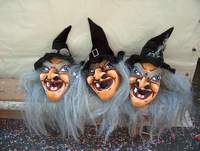
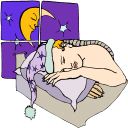 Beverly I. Kedzierski
Beverly I. Kedzierski